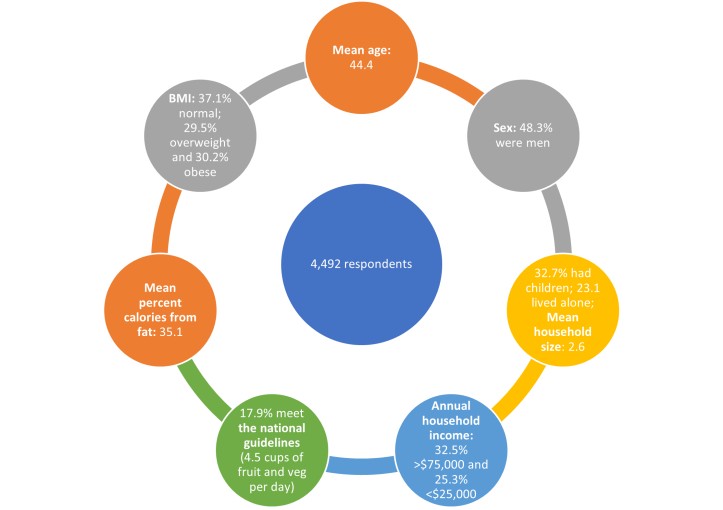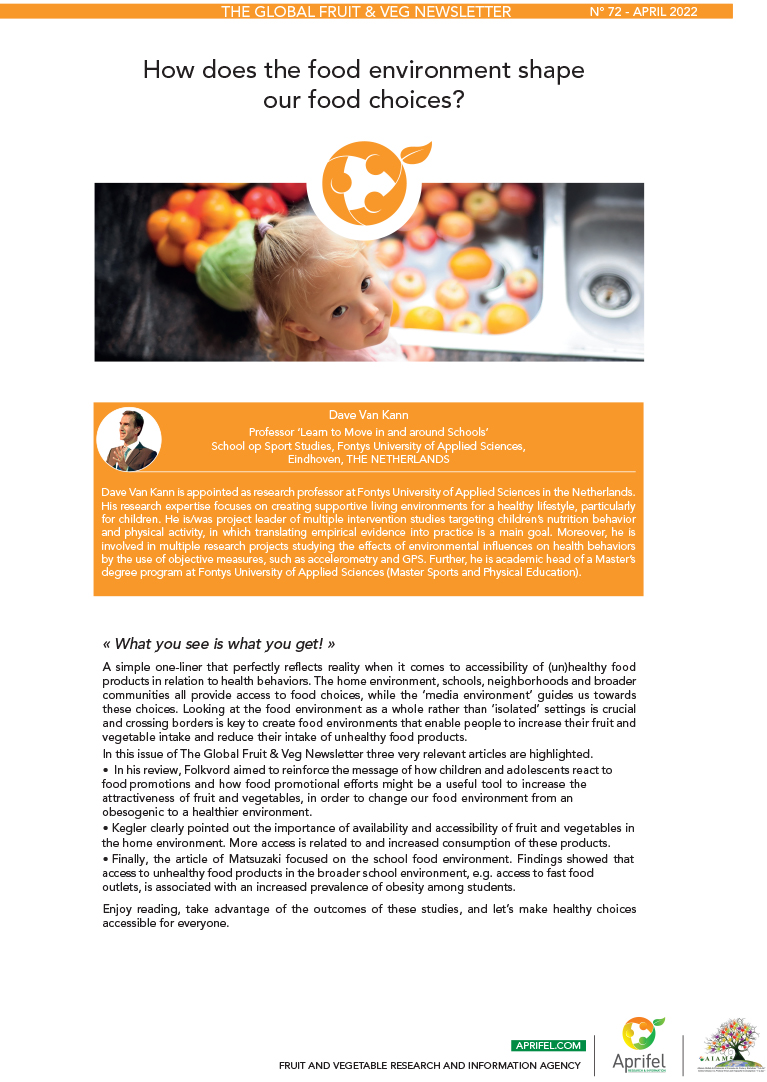Associations between home food environment and overweight/obesity among U.S. adults

U.S. Dietary Guidelines are not met by most Americans which makes identifying levers to improve diet a public health priority (USDA, 2020). With the majority of food being consumed at home, although this proportion has declined in recent decades, home is considered an immediate environment that may influence Americans eating behaviour (Lin, 2012). A number of studies have examined one or two aspects of the food environment such as food availability or the frequency of shared family meals (Bruening, 2017; Quick, 2017; Grant, 2017; Chai, 2018), but few have analyzed the full set of home environment characteristics and their possible association with weight and diet quality.
Thus, the following study examined the association between eleven dimensions of the home food environment (see methodology) among a national sample of U.S. adults and diet quality and overweight/obesity.

More diverse fruit and vegetable availability was associated with an increased likelihood meeting the recommended fruit and vegetable intake guidelines and lower odds of overweight/ obesity
Results reported an association between seven of 11 features of the home food environment with meeting national guidelines for fruit and vegetable intake and only two were directly associated with overweight/obesity.
A greater variety of fruit and vegetables available in home was associated with an increased likelihood of meeting the recommended fruit and vegetable intake guidelines. It was also associated with lower odds of overweight/obesity. These findings are consistent with other studies showing associations between fruit and vegetable inventory and their intake among children (Callender, 2017; Bryant, 2011; Ding, 2012) and adults (Gichunge, 2016). Frequency of shopping for fruit was also associated with fruit and vegetable intake.
However, surprisingly, results showed that a greater variety of fruit and vegetables available in the home was associated with increased percent energy from fat.
Other components of home food inventory, such as the availability of salty snacks/sweets and less healthy beverages, were associated an increased level of percent calories from fat, and surprisingly, salty snacks were associated with an increased likelihood of meeting fruit and vegetable intake.
Food placement and healthier meal preparation were associated with decreased percent calories from fat and increased likelihood of meeting national fruit and vegetable guidelines
Food placement was estimated by asking participants how often fruits, vegetables, and high calorie snack foods are kept in a place where they are easily seen and reached (5-point scale from never to almost always). According to this study, this feature was associated with decreased percent calories from fat and increased likelihood of meeting national fruit and vegetable guidelines.
In addition, healthier meal preparation, but also increased frequency of restaurant food for family meals, were associated with increased likelihood of meeting fruit and vegetable intake guidelines. Healthier meal preparation was also associated with a lower level of energy from fat, while restaurant food for family meals was associated with higher percent energy from fat.
Finally, eating family meals and snacks with the TV on was associated with both increased percent intake from fat and odds of overweight/obesity.
Based on: Kegler MC, Hermstad A, Haardörfer R. Home food environment and associations with weight and diet among U.S. adults: a cross-sectional study. BMC Public Health. 2021;21(1):1032
- Numerous dimensions of the home food environment, including food and beverage availability and variety, food placement, meal preparation, frequency of shopping, serving restaurant meals, and TV and eating practices, were associated with diet quality.
- A greater diversity of fruit and vegetable was associated with lower odds of overweight/ obesity, while more frequent family eating while watching TV was associated with an increased odd.
- Targeting these dimensions of the home food environment may be a promising approach for future intervention research.

